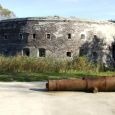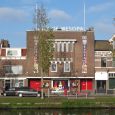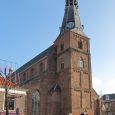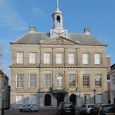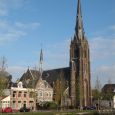Weesp
Advertisement
By air
Nearest airports to Weesp are sorted by the distance to the airport from the city centre.
Hilversum Airport (distanced approximately 15 km)
Amsterdam Schipol Airport (distanced approximately 18 km)
De Bilt Airport (distanced approximately 26 km)
Utrecht Soesterberg Airport (distanced approximately 27 km)
Soesterberg Airport (distanced approximately 27 km)
City Hall Weesp
The town hall of Weesp was built in 1772-1776. The neoclassical building was designed by architect Jacob Otten Husly (1738-1796). It served as an administrative building, but there was also talk straight. The corresponding dungeons and tribunal are still visible. The building is now the municipal museum located where Dutch porcelain from the 18th century is the main collection. In the period 1759-1768 was the first Weesp porcelain produced in the Netherlands.
The town hall is a monument .
Great or St. Lawrence Church
The Great or St. Lawrence Church is a church on the Kerkstraat / Neuve in the center of the North Holland location Weesp .
The church was built in the period from 1429 to 1462 in late Gothic style. The church is a famous organ, built by the brothers Bätz (1823), which is regularly played. Upstairs in the tower of the Romanesque church is the Hemony Carillion was created by the famous bell maker P. Hemony in 1671.The church building is a national monument .
Saint Lawrence Church
The St Lawrence Church is a Roman Catholic church on the Herengracht 16 in Weesp .
The Great Church in Weesp was originally dedicated to St. Lawrence and Mary Magdalene , but continued after the Reformation to the Protestants. Catholics from Weesp, then made use of secret churches . In 1792, the Herengracht a new church, designed by Andrew Schouten. This year it was the Catholics still not allowed to build a real church, the building waadoor only recognizable as such inside. This building has been in use until 1874.
In 1874 began preparations for building the present church and on April 1, 1875 the first stone was laid. On August 24, 1876, the church was in use and dedicated to St. Lawrence and Mary Magdalene. Architect Theo Asseler designed a three-aisled cruciform church in neo-Gothic style. Lack of money, only the lower part of the tower. The superstructure was built in 1900 to a design by A. Bruning.
City of Wesopa
City of Wesopa is a medium sized combination of cinema and theater in the northern Dutch town of Weesp .The building in which the City of Wesopa is located, was on 14 October 1948 the same cinema opened. In the years after World War II were the Press Be need for entertainment as long as they had been deprived of the latest movies. Not only was this the case in Weesp, the Netherlands in the cinemas were built to meet this need. Movies like The Guns of Navarone and Ben-Hur were then on the big screen.
Fort Uitermeer
The Fort Uitermeer is an old fort which is included in the New Dutch Waterline and later the Defence Line of Amsterdam . It is located in the North Holland town Weesp on an island on the east bank of the Vecht , southeast of Weesp in the hamlet Uitermeer . To the southwest lies the Fort Hinderdam northwest and the Fortress Weesp .
The fort was designed to protect the land passages between the Naardermeer and the Vecht. The two main thoroughfares, the railway from Amersfoort to Amsterdam and the road from Hilversum to Weesp . Also enabled the neighboring forts with his artillery to help. It also protected the lock that the land could be put under water.
The Friendship
Friendship is a 1900 -built windmill at the site of the mill burned in 1899 and is on Utrechtseweg 11a to Fight Utrecht in Weesp . The mill has an octagonal flour mill on the type of mill with a pine , and a wooden base, thatched superstructure. There are four torque millstones with regulators . A pair consisting of 16er artificial stones, a couple 17er blue stones and artificial stones 17er 2 couples. Couples are three times skilled and are used according to need.
The refuge has Fauël fokwieken with flaps. The welded steel rods were made in 1976 by the manufacturer to Derckx Beegden. The outer rod has the number 193 and is 24.80 m long. The inner rod with the number 194 is 10 cm shorter.
The Eendragt
The Eendragt is a 1691 as malt mill built windmill at Utrechtseweg 13, along the river Vecht in Utrecht in the Dutch town of Weesp . The mill has an octagonal flour mill on the type of mill with a stone foundation and a wooden, thatched superstructure. Around 1807 the mill was converted into a shell sand mill and in 1815 was converted into Eendragt sawmill . From 1920 on engine power was cut in 1932, saw the wind ceased. After this hit the Eendragt into disrepair. In 1950 the municipality bought the mill Weesp these two years later to a private party under the obligation to sell the mill exterior restoration, which was done. The mill was thereby transformed into a whole house, with some characteristic features were lost. Since 1977 the mill running again and again. The ongoing work remains only the upper wheel , the rest is removed. The kruiwerk for the wind kruien fled consists of wooden rollers.
Right next to the corn mill, the Eendragt The Friendship .
Church of Wood
The wooden church is a church building in the North Holland location Weesp.This church is also called "chocolate church 'as it called on behalf of the ladies JS and HC van Houten was built. Construction took place at the site of a demolished house of Van Houten on the Oudegracht. In the 15th and 16th century, the monastery at this place with its chapel, the "Old Convent".
The first drawings of the church date from 1904, designed by BJ Ouëndag . The church was built in transition architecture with many neo-Romanesque style motifs. In the interior too rationalistic and Art Nouveau elements identifiable. On the side of the apse are the vestry and parsonage built. The consecration of the church took place on December 9, 1906. Simultaneously with the construction of the church was a nursery set up.
Information not available


